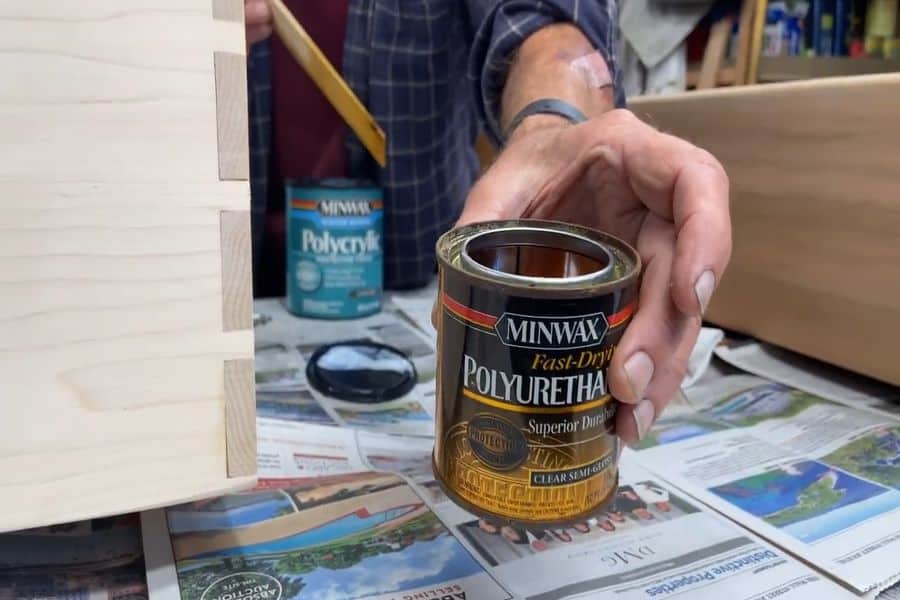Achieving a flawless finish on your woodworking project involves a meticulous process, and sanding between coats of polyurethane is a crucial step toward that immaculate result. Polyurethane, a durable and popular finish, can elevate the appearance of woodwork while providing protection. However, to attain a truly flawless finish, understanding the techniques and nuances of sanding between coats of polyurethane is essential.
Polyurethane and Its Application
Polyurethane serves as a protective coating that not only enhances the beauty of wood but also shields it from moisture, scratches, and heat. This finish is available in water-based and oil-based forms, each offering its unique characteristics.
Before applying polyurethane, ensure the surface is clean, dry, and free from any dust or debris. Use a high-quality brush or applicator designed for polyurethane to achieve a smooth and even coat. Allow each layer to dry completely as per the manufacturer’s recommendations before proceeding to the sanding process.
What Are The Importance of Sanding Between Coats?

Sanding between coats of polyurethane is a crucial step that shouldn’t be overlooked. It helps to:
Promote Adhesion
Sanding between coats creates a microscopic roughness on the surface of the previous polyurethane layer. This roughness provides a better surface for the subsequent layer of polyurethane to grip onto. By roughening the surface slightly, sanding enhances the mechanical adhesion of the new coat, allowing it to bond more effectively with the layer beneath it.
This improved adhesion is crucial for the durability and longevity of the finish. Without proper adhesion between coats, the layers may separate or peel over time, leading to an unsightly and less protective finish.
Remove Imperfections
During the application of polyurethane, various imperfections can occur, such as dust settling on the surface, brush marks, or uneven application. Sanding between coats serves as a corrective measure to address these imperfections.
Dust particles may settle on the drying polyurethane, creating a rough texture. Sanding gently removes these particles, ensuring a smoother and cleaner surface for the next coat. Additionally, brush marks or uneven areas from the previous coat can be leveled out through sanding, resulting in a more uniform and aesthetically pleasing finish.
Level the Surface
Polyurethane, when applied, might not always settle perfectly flat due to factors like application technique or the nature of the wood itself. Sanding between coats helps to level out the surface, evening out any irregularities or minor bumps that may have formed during application.
This leveling process is essential for achieving a uniform texture and sheen across the woodwork. It ensures that the subsequent coats of polyurethane adhere evenly and contribute to a consistent finish, enhancing the overall appearance of the wood.
Masterful Techniques for Sanding Between Coats
Start sanding with a fine-grit sandpaper, around 220-400 grit, to lightly abrade the surface without removing too much of the previous coat. Progress to higher grits for a smoother finish, ending with an ultra-fine grit, such as 600-800, for a polished look.
Use a sanding block or a sanding pad to apply even pressure across the surface. Sand lightly in a circular or back-and-forth motion, ensuring you cover the entire area uniformly. Be cautious not to sand too vigorously, as it could remove too much finish or damage the wood.
After sanding, remove all dust particles and debris using a tack cloth or a vacuum. A clean surface is crucial before applying the next coat of polyurethane to prevent imperfections.
Repeat the application and sanding process for multiple coats until you achieve the desired finish. Each subsequent coat should be thinner and smoother than the previous one, leading to a progressively refined surface.
Conclusion
Sanding between coats of polyurethane is an indispensable part of achieving a flawless finish on woodworking projects. By employing the right techniques and being patient throughout the process, you can ensure a smooth, blemish-free surface that highlights the natural beauty of the wood while providing excellent protection.
Remember, attention to detail and using the appropriate tools and materials will go a long way in mastering the art of sanding between coats of polyurethane, resulting in impeccable woodworking creations.
